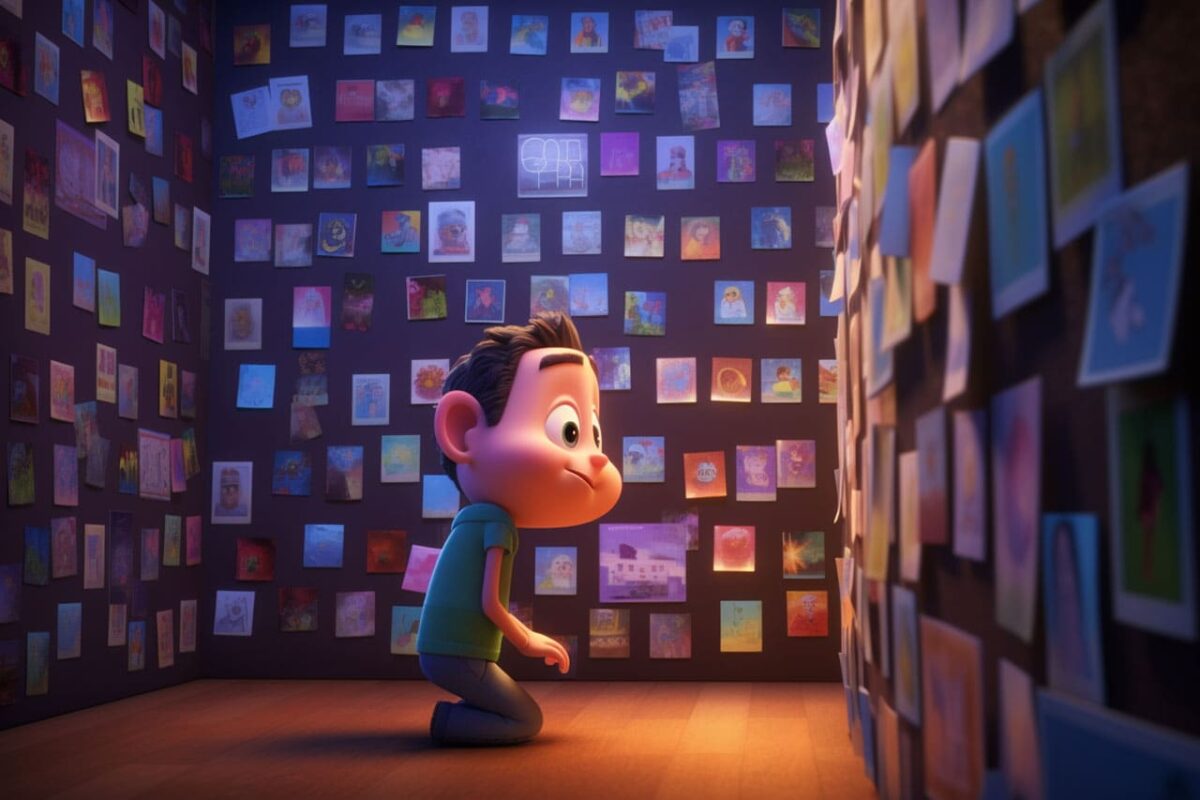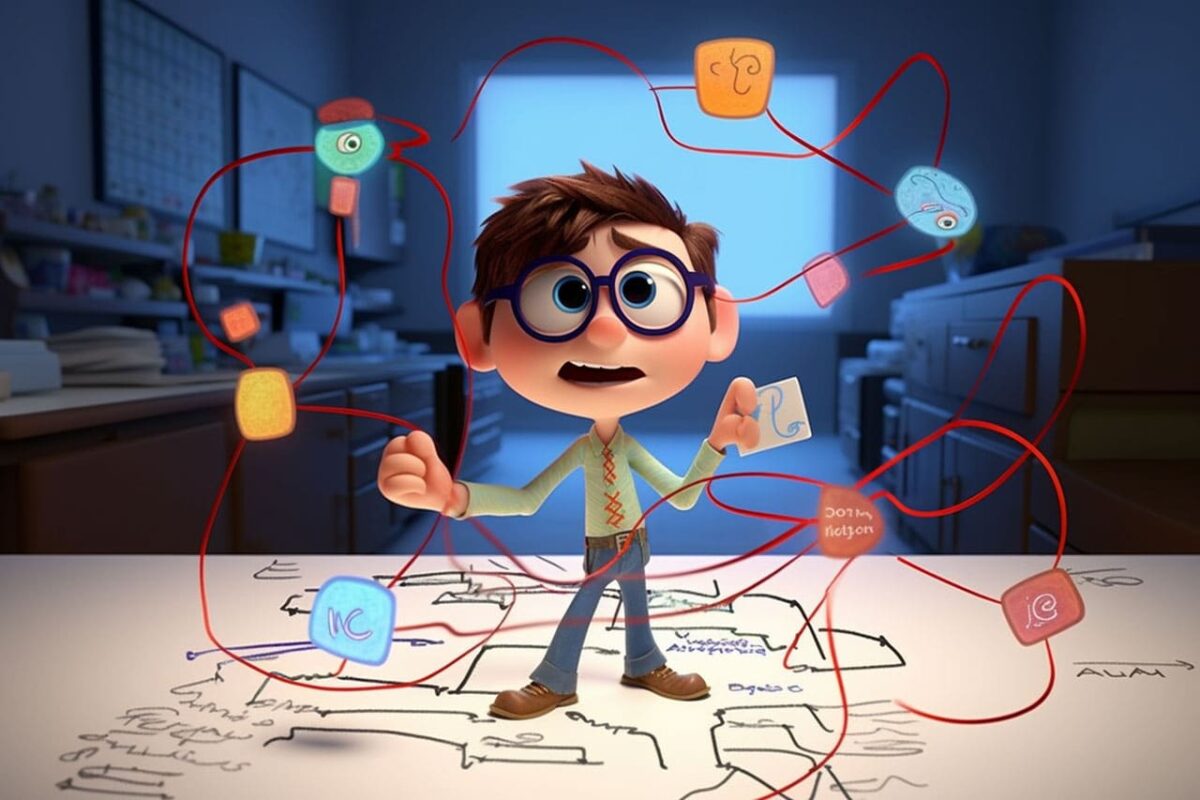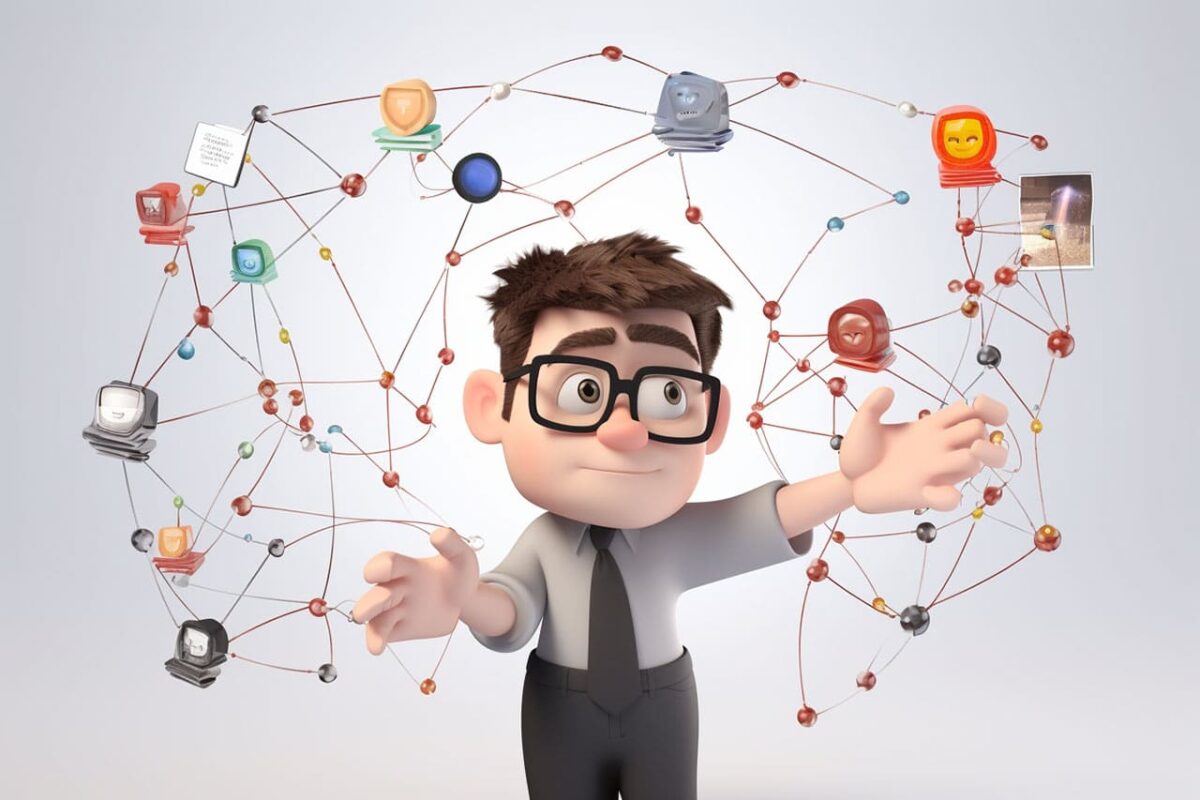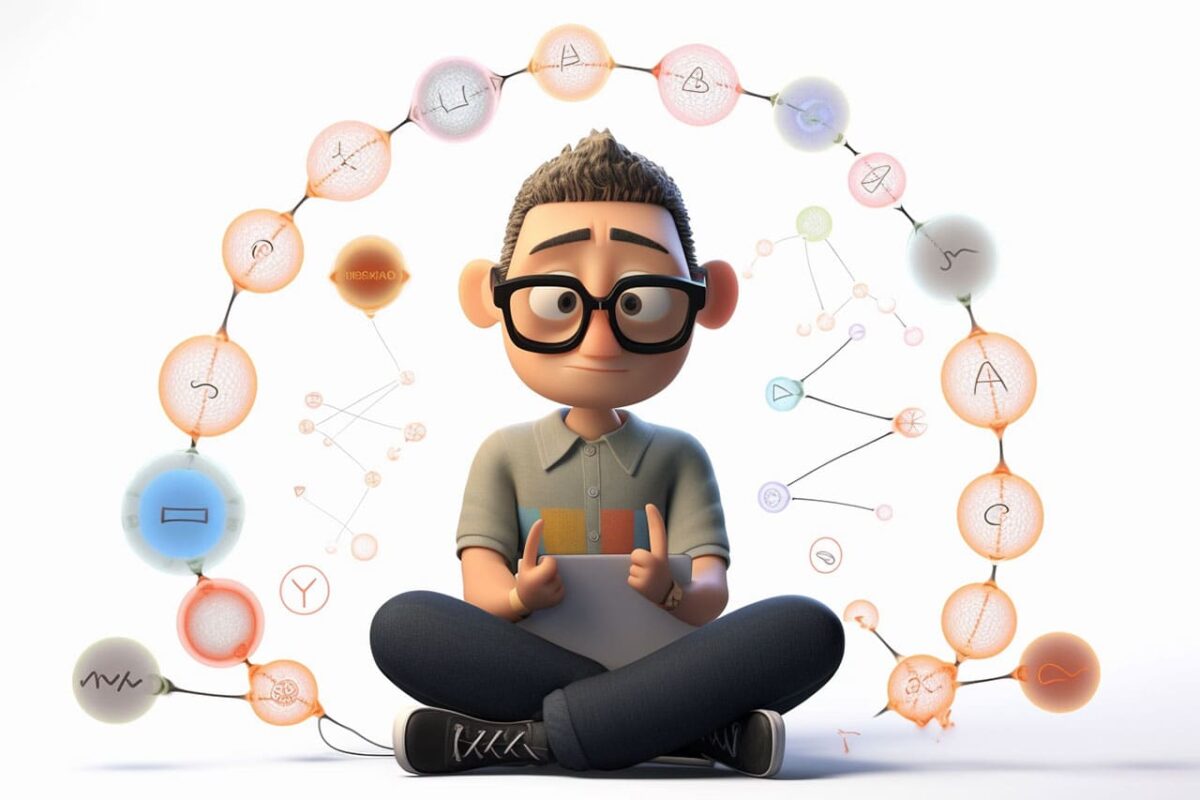Mind mapping, that peculiar practice of organizing thoughts and ideas on a blank canvas, has emerged as a truly wondrous tool in the realm of cognitive exploration. With its intricate web of interconnected concepts, mind mapping transcends the boundaries of conventional note-taking and unleashes the power of imagination. Today, we delve into the depths of this extraordinary technique and uncover the multitude of benefits it brings to the table.
Unleashing Creativity
The human mind is a vast and fertile ground where creativity takes root and flourishes. Yet, traditional linear note-taking methods often stifle the flow of ideas, confining them within rigid boundaries. Mind mapping, on the other hand, sets the imagination free. By employing radiant branches and nodes, mind maps encourage a non-linear approach that mirrors the natural workings of the mind.
In the midst of mind mapping’s creative playground, ideas sprout like wildflowers, branching out in unexpected directions. The visual nature of mind maps allows us to capture the essence of thoughts, concepts, and connections, empowering us to explore uncharted territories of innovation.
Enhancing Productivity
Ah, productivity! That elusive state of mind where tasks are effortlessly completed, deadlines are met with ease, and accomplishments are plentiful. Mind mapping, with its ability to declutter the mind and enhance focus, serves as a faithful companion on the journey toward productivity.
Traditional note-taking methods often leave us drowning in a sea of disconnected ideas and fragmented thoughts. But fear not, for mind mapping rides to the rescue! By organizing information into a cohesive and visually appealing structure, mind maps allow us to perceive the bigger picture while still capturing the intricate details. This holistic approach fosters a clear understanding of the subject matter, leading to increased efficiency and improved decision-making.
Moreover, mind maps serve as a roadmap, guiding us through complex projects and labyrinthine tasks. With their hierarchical structure and easily navigable pathways, mind maps enable us to break down overwhelming undertakings into manageable chunks. By tackling one node at a time, we steadily progress towards our goals, leaving procrastination and overwhelm in the dust.
Harnessing Organization
In the midst of the modern chaos, where information bombards us from all directions, the art of organization becomes a vital skill. Mind mapping emerges as a powerful ally in our quest for order amidst the pandemonium.
With its structured yet flexible framework, mind mapping brings a sense of order to the otherwise chaotic world of ideas. By categorizing information into branches and sub-branches, mind maps allow us to classify, prioritize, and categorize thoughts with remarkable ease. This visual hierarchy helps us grasp the relationships between concepts, facilitating a deeper understanding of complex topics.
But mind mapping’s organizational prowess extends beyond mere note-taking. It infiltrates every corner of our lives, from planning projects and outlining articles to structuring business strategies and organizing personal goals. With mind maps as our loyal companions, we navigate the labyrinth of life with confidence, knowing that clarity and structure await us at every turn.
Igniting Effective Brainstorming
Ah, the joyous realm of brainstorming, where ideas intertwine and creativity runs wild. Mind mapping is the catalyst that sets this euphoric process into motion, elevating our brainstorming sessions to unprecedented heights.
Gone are the days of linear lists and uninspiring brainstorming methods. Mind maps offer a refreshing alternative, one that embraces the free flow of ideas and fosters collaboration. As we populate the branches of our mind maps with an array of thoughts, they begin to interact and spark new connections. The organic nature of mind mapping encourages us to explore tangents and unconventional paths, uncovering hidden gems of innovation along the way.
Picture a room filled with individuals, each armed with a pen and a blank sheet of paper. As the mind maps take shape, a symphony of ideas emerges, harmonizing and resonating with one another. The collaborative nature of mind mapping fosters a rich exchange of perspectives, fueling creativity and opening doors to unexplored possibilities.
In this vibrant atmosphere, the limitations of linear thinking are shattered, and the true potential of collective intelligence is unleashed. Ideas bounce off the walls, intertwining and evolving, until a masterpiece is born from the collective efforts of the participants. Mind mapping, the conductor of this creative orchestra, guides us toward brilliance with each stroke of the pen.
Cultivating Clarity and Focus
In the era of information overload, our minds often resemble tangled webs, with thoughts and ideas jumbled together in a chaotic dance. It is within this cognitive labyrinth that mind mapping emerges as a guiding light, illuminating our path to clarity and focus.
By externalizing our thoughts onto a mind map, we untangle the web of complexity and bring order to the chaos. Each node represents a distinct idea, connected to others by branches that mirror the associations within our minds. This visual representation allows us to see the bigger picture, enabling a deeper comprehension of complex concepts.
As we engage in the process of mind mapping, our attention becomes laser-focused. The act of organizing our thoughts forces us to filter out distractions and hone in on the task at hand. This heightened state of focus allows us to immerse ourselves fully in the subject matter, enhancing our understanding and retention of information.
Furthermore, mind mapping serves as a compass, guiding us through the vast sea of knowledge. As we navigate the intricate pathways of our mind maps, we can easily trace back our train of thought, retrieve information, and build upon existing ideas. This seamless navigation ensures that we remain on track, even when faced with the most intricate of mental landscapes.
Liberating the Imagination
The human mind, that boundless realm of creativity and imagination, yearns to break free from the shackles of linear thinking. Mind mapping presents itself as a key to unlock the gates of this fantastical realm, setting our imagination on a wild and exhilarating ride.
In the realm of mind mapping, the canvas is infinite, and the possibilities are endless. As we traverse the branches and nodes, our thoughts begin to intertwine and flourish, transcending the confines of traditional thinking. The visual nature of mind maps provides a visual stimulus, triggering associations and unleashing a torrent of creative energy.
The act of mind mapping itself becomes a playground for the imagination. We can incorporate colors, symbols, and images into our mind maps, adding layers of depth and meaning to our ideas. The freedom to explore unconventional connections and let our thoughts roam in uncharted territories fuels our imagination and breathes life into our creative endeavors.
Whether we are artists seeking inspiration, writers seeking their muse, or innovators searching for groundbreaking ideas, mind mapping invites us to embark on a limitless journey of imagination. It is within the borders of these radiant mind maps that the seeds of innovation take root and blossom into something truly extraordinary.
Boosting Memory and Retention
Our minds are like sponges, absorbing information from every corner of our lives. But in this vast ocean of knowledge, how do we ensure that the valuable drops are not lost to the currents of forgetfulness? Fear not, for mind mapping is here to aid our memory and enhance our ability to retain information.
The visual nature of mind mapping serves as a mnemonic device, aiding our memory through the power of association. As we create visual connections between concepts and ideas on a mind map, we tap into the innate ability of our brains to remember images and spatial relationships. The vibrant colors, shapes, and symbols we use in our mind maps act as triggers, invoking vivid recollections of the information they represent.
Imagine studying a complex topic, trying to commit key concepts to memory. Instead of drowning in a sea of text, you create a mind map, weaving together interconnected ideas with branches and nodes. As you revisit the mind map, your memory is jogged by the visual cues, effortlessly recalling the relationships between concepts and the details associated with each node.
Furthermore, the process of actively engaging with the information while mind mapping stimulates multiple areas of the brain. It involves not only visual processing but also logical reasoning, creativity, and spatial awareness. This multi-sensory experience enhances our encoding and retrieval processes, making it easier to recall information when needed.
Mind mapping also provides a structure for organizing information in a way that aligns with our brain’s natural patterns of thinking. Our minds tend to form associations and create mental connections between related concepts. By representing these connections visually on a mind map, we leverage the power of our brain’s natural organization and retrieval mechanisms, facilitating faster and more efficient recall.
As Mark Twain once humorously remarked, “I have a memory like an elephant. In fact, elephants often consult me.” While we may not possess the memory capacity of an elephant, mind mapping certainly empowers us to make the most of our cognitive abilities and optimize our memory and retention capabilities.
Promoting Critical Thinking and Problem-Solving
In a world that demands agile and analytical minds, the cultivation of critical thinking and problem-solving skills is paramount. Mind mapping serves as a formidable ally in this endeavor, nurturing our ability to think critically, analyze information, and tackle complex problems.
By visually representing ideas and their relationships, mind maps enable us to observe the big picture while still maintaining a focus on the details. This holistic view promotes a deeper understanding of complex topics and encourages us to think beyond the surface level. As we explore the interconnections and implications of different concepts within a mind map, our critical thinking faculties are engaged, honed, and strengthened.
Moreover, mind mapping stimulates our ability to identify patterns, draw conclusions, and make connections between seemingly unrelated pieces of information. It encourages us to approach problems from multiple angles, exploring different branches and nodes of thought to find innovative solutions. The non-linear structure of mind maps allows us to break free from rigid thinking patterns and embrace a more flexible and adaptive mindset.
When faced with a complex problem, mind mapping provides a systematic framework for analysis and decision-making. We can break down the problem into its constituent parts, examining the causes, effects, and potential solutions. The visual representation of the problem on a mind map allows us to visualize the connections between different variables, facilitating the identification of root causes and the formulation of effective strategies.
In the words of Mark Twain, “The secret of getting ahead is getting started. The secret of getting started is breaking your complex, overwhelming tasks into small, manageable tasks, and then starting on the first one.” Mind mapping empowers us to do just that—break down complex problems into manageable components and embark on the journey of problem-solving with confidence and clarity.
Conclusion
As we conclude our exploration of the benefits of mind mapping, it becomes evident that this ingenious technique holds remarkable power. From unleashing creativity and enhancing productivity to fostering organization and promoting critical thinking, mind mapping has earned its place as an invaluable tool in the realm of cognitive empowerment.
With its ability to ignite the fires of imagination, untangle the webs of complexity, and harness the power of association, mind mapping invites us to explore the depths of our minds and unleash our full cognitive potential.
So, let us embark on this marvelous journey of mind mapping, armed with colorful pens and blank canvases, ready to weave intricate webs of ideas and connections. Let us embrace the non-linear, expansive nature of mind maps, allowing our thoughts to flow freely and our creativity to soar to new heights.








